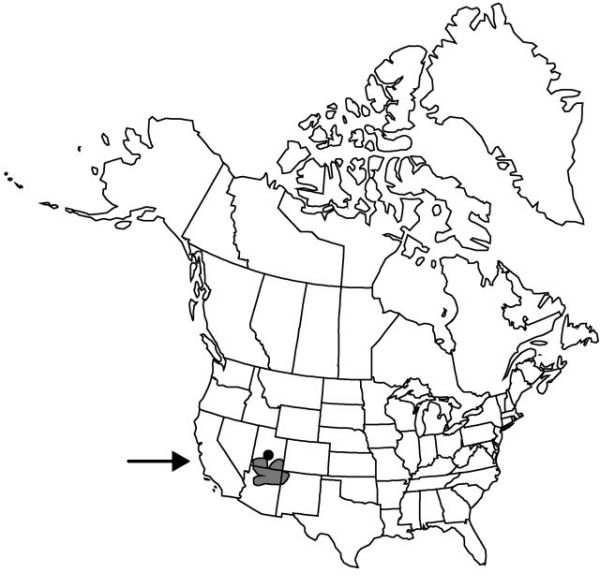Yucca angustissima
Rep. (Annual) Missouri Bot. Gard. 13: 58, plate 23, fig. 1, plate 24, fig.1, plate 83, fig. 6, plate 93, fig. 1. 1902.
Plants solitary or forming small to large colonies of rosettes, acaulescent or rarely caulescent, to 3 m diam.; rosettes usually small. Stems procumbent, 0.1–0.4 m, or erect, 1–2 m. Leaf blade rigidly spreading, including distal leaves, linear, lanceolate, concavo-convex, or plano-keeled, widest near middle, 20–80(–150) × 0.4–2 cm, rigid or flexible, not glaucous, margins entire, becoming filiferous, white, becoming brownish, gray, or green, apex long-acuminate, spinose, spine acicular, short, 3–7 mm. Inflorescences racemose, occasionally paniculate proximally, arising well beyond rosettes, (4–)8–20 dm, glabrous or finely pubescent; branches, when present, 0.5–1 dm; bracts erect, linear, proximal 10–20 × 1–2 cm, distal 3–8 × 1–2 cm; peduncle scapelike, 0.3–2.5 m, 1–2 cm diam. Flowers pendent, 3–5.5(–6.5) cm; perianth campanulate to globose; tepals distinct, white to cream or greenish white, often tinged pink or brown, broad to narrowly elliptic to lanceolate-elliptic or orbiculate, 3–6.5 × 1.3–2.5 cm; filaments 0.7–2.8 cm; anthers 3.2–6 mm; pistil 1.5–3.5 cm; style white to pale green, 3–10(–13) mm; stigmas lobed. Fruits erect, capsular, dehiscent, moderately to deeply constricted, 3.5–7.5 × 2–3 cm, dehiscence septicidal. Seeds dull black, thin, 7–9 × 5–7 mm.
Distribution

North America.
Discussion
Varieties 4 (4 in the flora).
Our treatment of Yucca angustissima reflects the concepts of J. L. Reveal (1977c). Each variety is well isolated geographically, but they overlap with one another morphologically. S. L. Welsh et al. (1993) treated the taxa in this complex at species level, with the exception of Y. angustissima var. aria, considered a high-altitude extreme of the typical variety. K. H. Clary (1997) presented DNA evidence that supports Welsh et al.’s treatment of this complex, in that Y. angustissima, Y. kanabensis, and Y. toftiae sort out distinctly from one another in her consensus tree. However, Welsh et al. indicated significant intergradation among these taxa, which makes their recognition at varietal rank seem most appropriate.
Selected References
None.
Lower Taxa
Key
| 1 | Capsules deeply constricted, 3.5–5.5(–5.7) cm; inflorescence and peduncle 0.8–1.5(–1.8) m. | > 2 |
| 1 | Capsules moderately constricted, 4.5–7.5 cm; inflorescence and peduncle 1–2.5(–4.5) m. | > 2 |
| 2 | Flowers 4.5–5.5 cm; leaf blade 25–45 cm; style 10–13 mm. | Yucca angustissima var. angustissima |
| 2 | Flowers 3.5–4.5(–5.2) cm; leaf blade 40–60 cm; style 7–10 mm. | Yucca angustissima var. avia |
| 3 | Flowers 3–5.2 cm; leaf blade 20–75 cm; pistil 1.5–3.2 cm; style 3–10 mm; stem plus peduncle and inflorescence 2.3–4.5 m. | Yucca angustissima var. toftiae |
| 3 | Flowers 5.5–6.5 cm; leaf blade 45–80(–150) cm; pistil 3–3.5 cm; style 5–8 mm; stem plus peduncle and inflorescence 2–3.5 m | Yucca angustissima var. kanabensis |